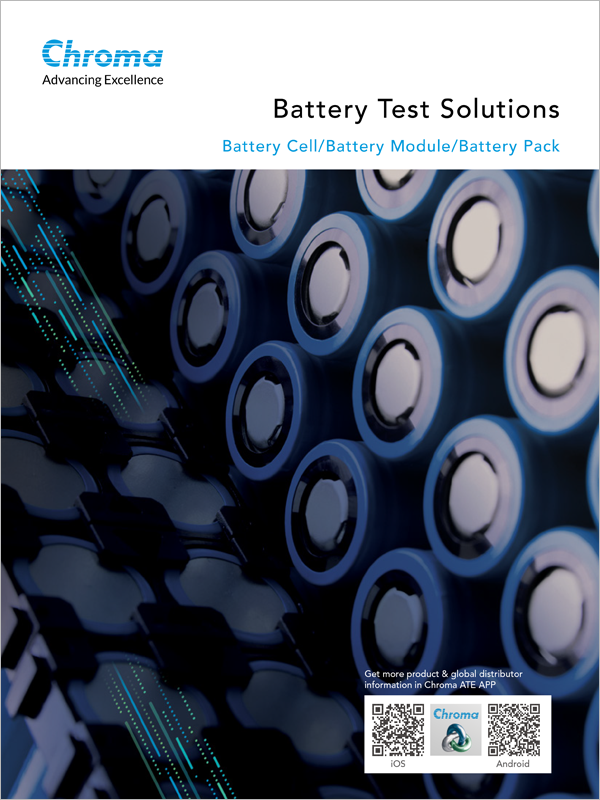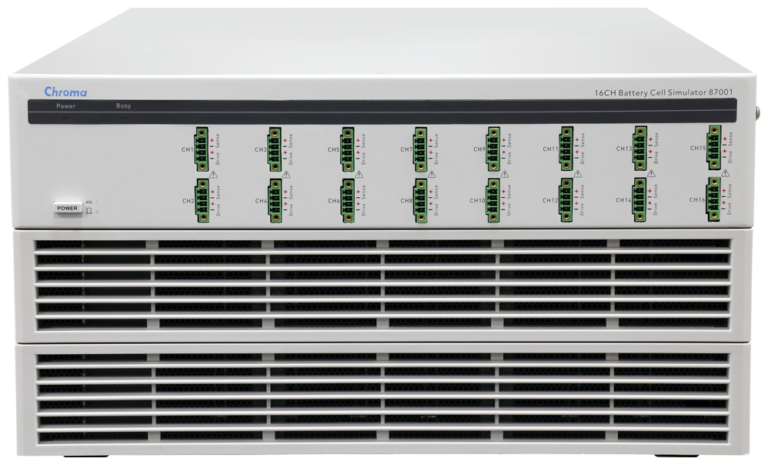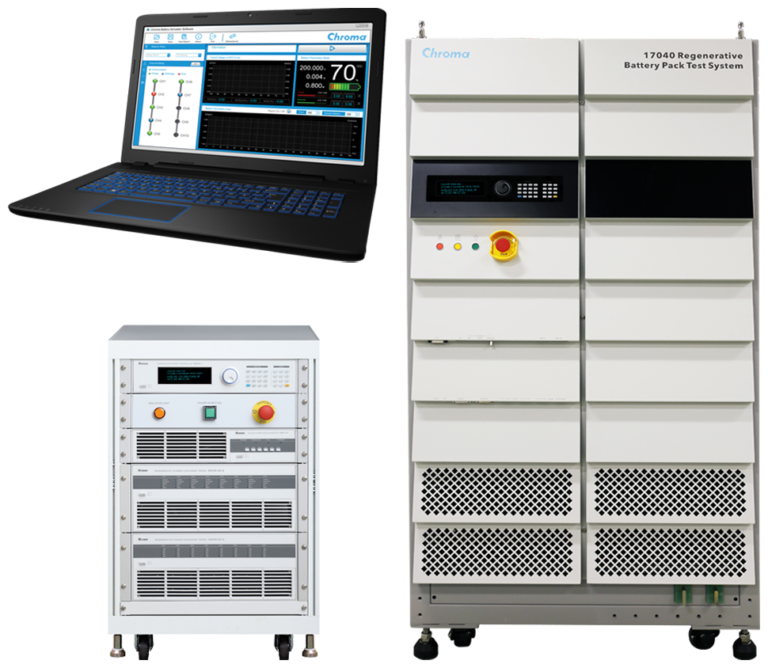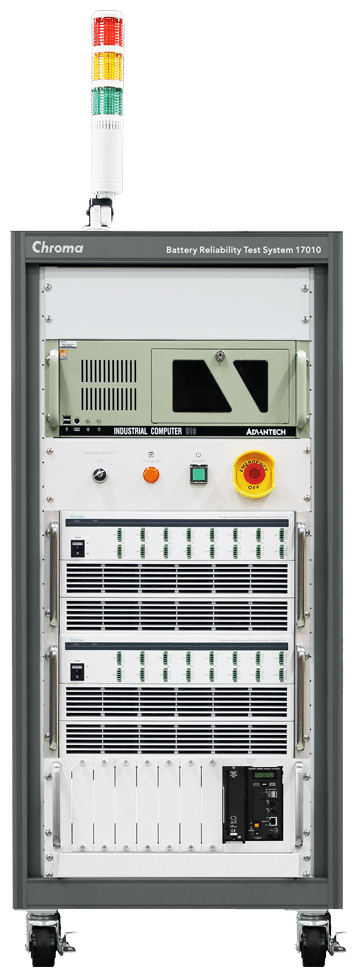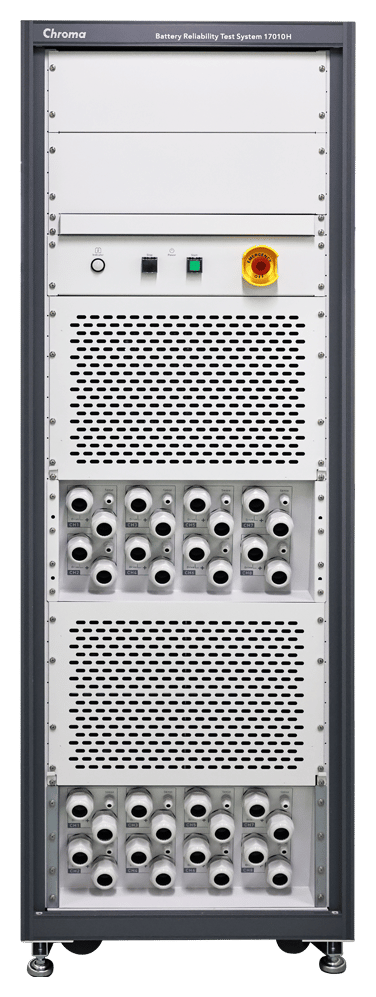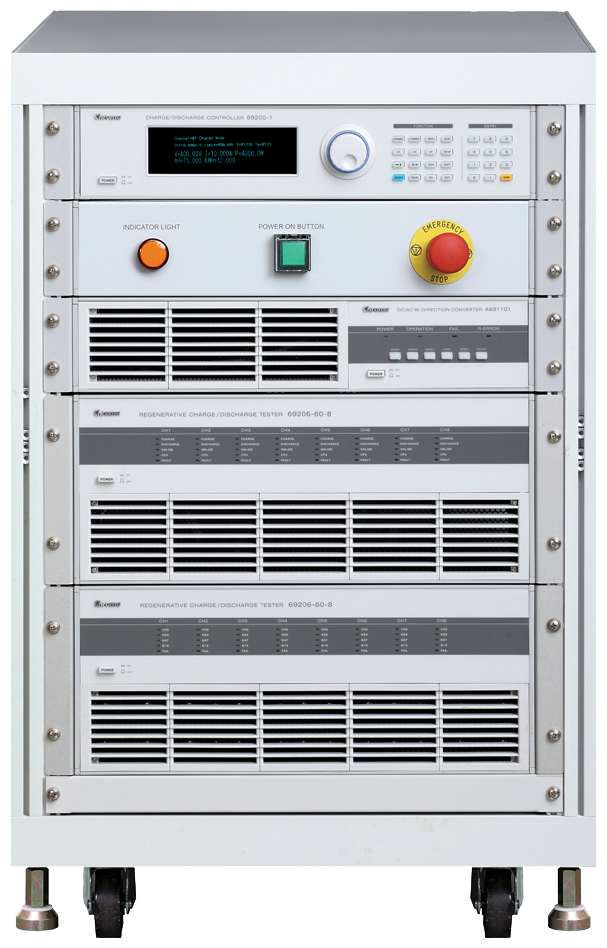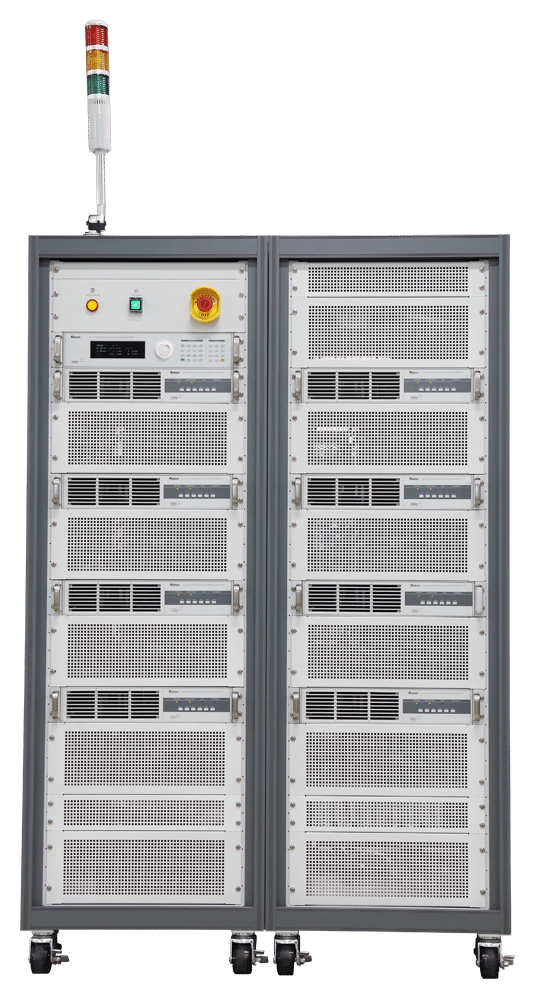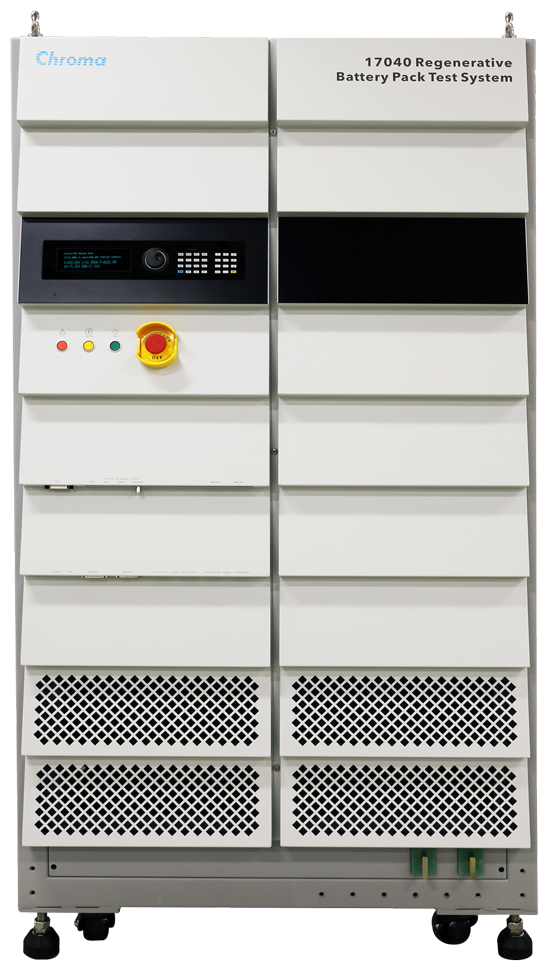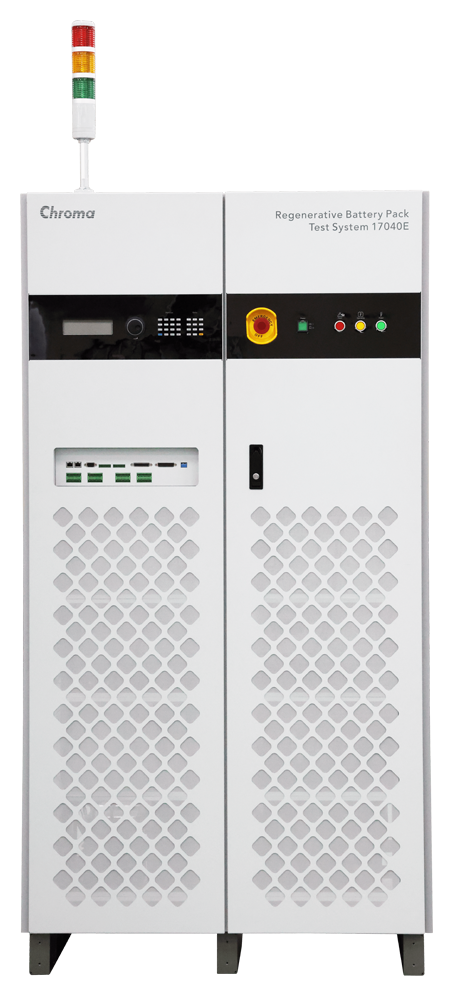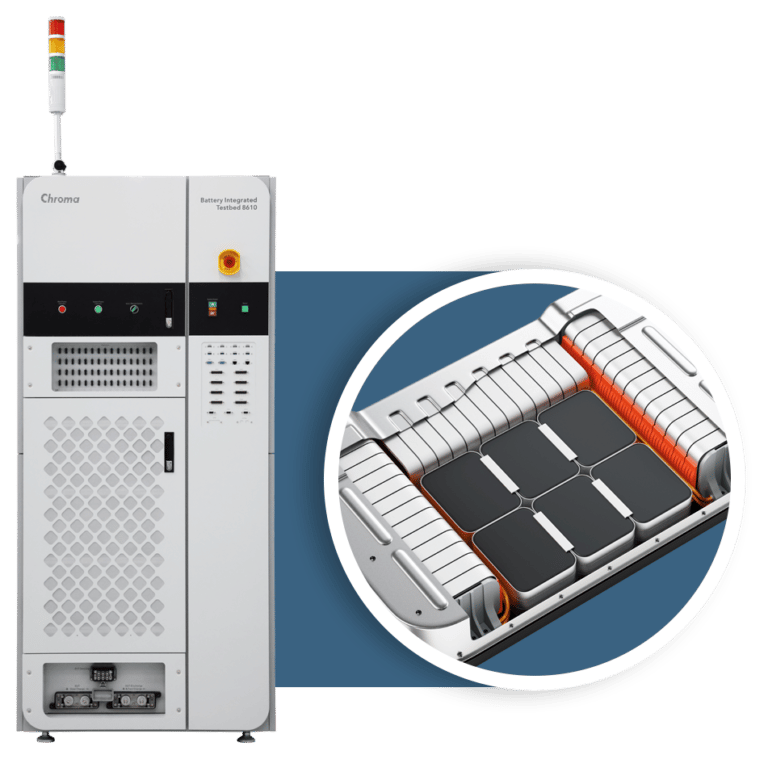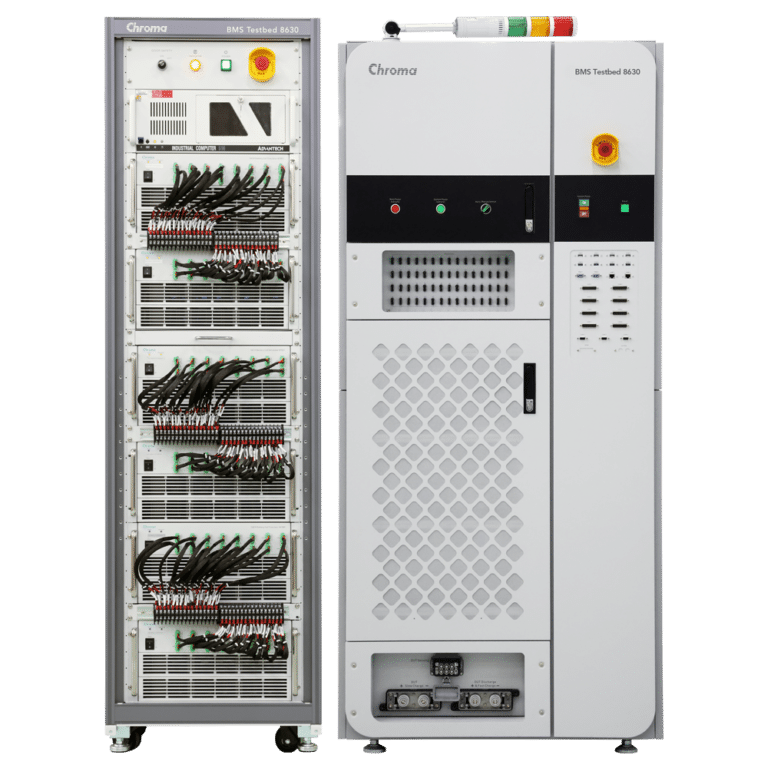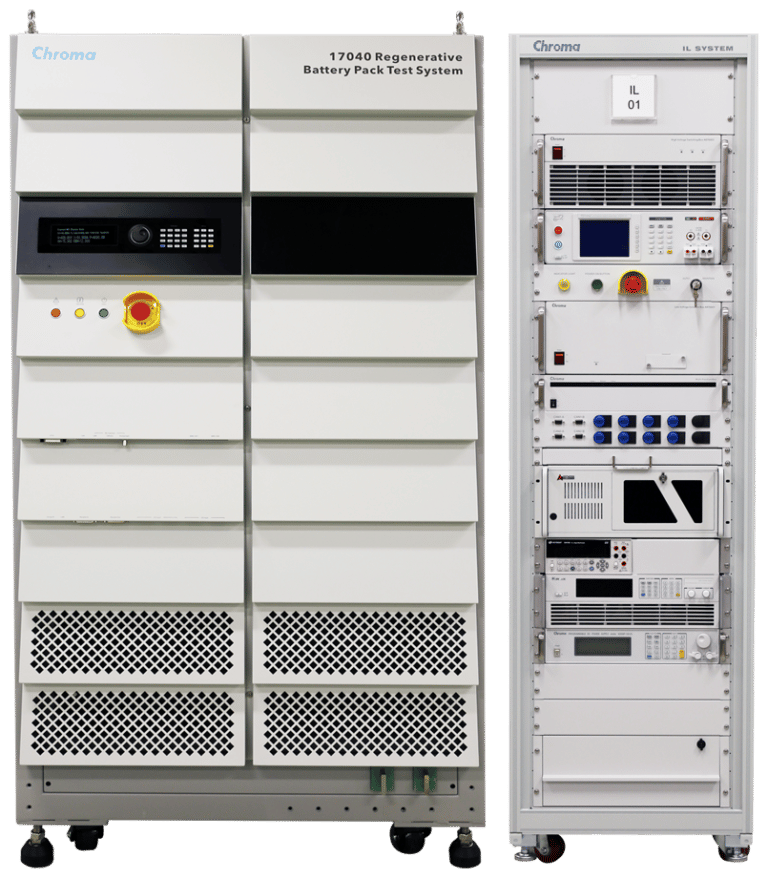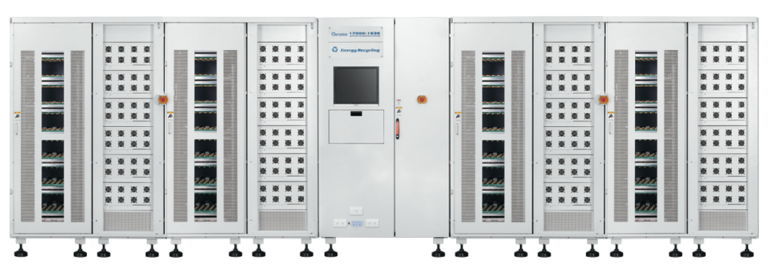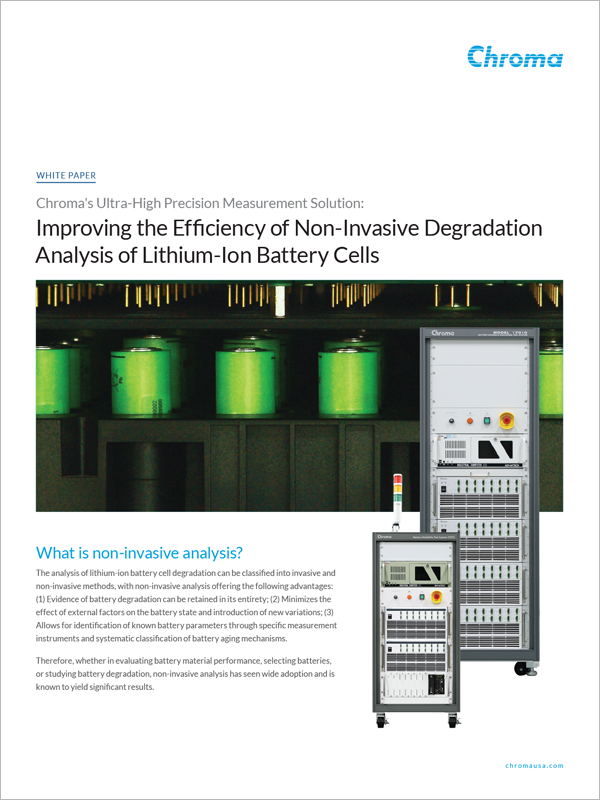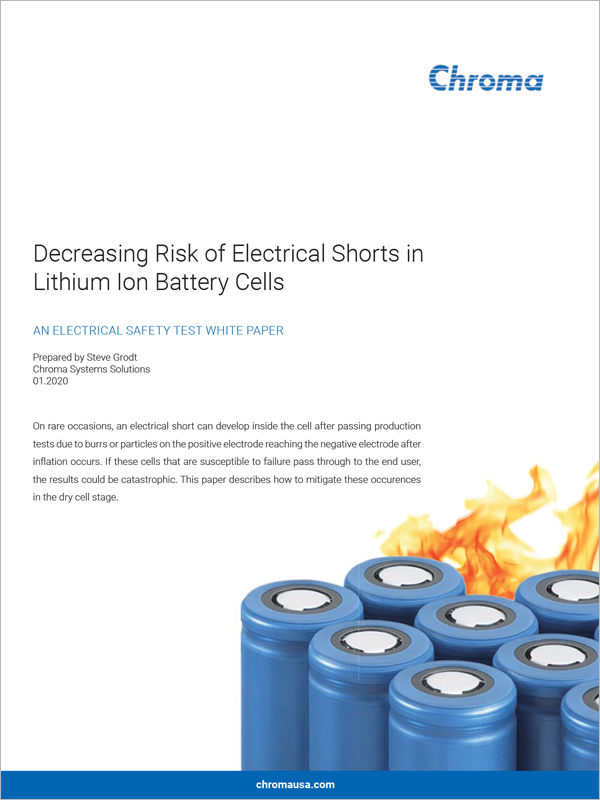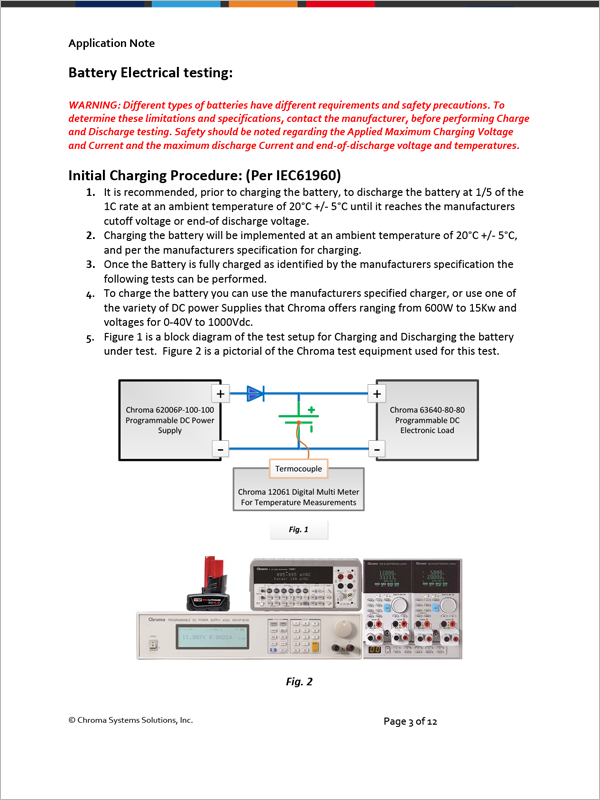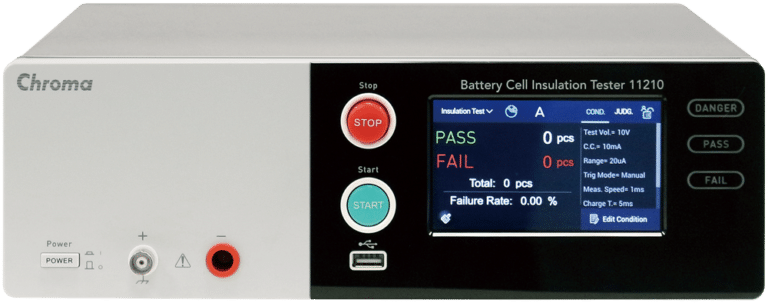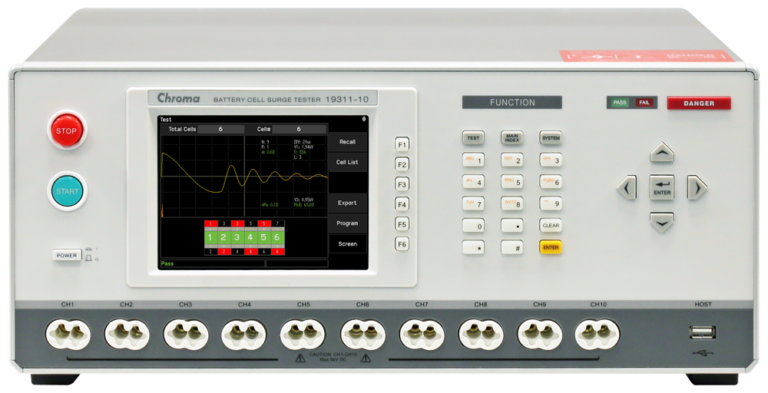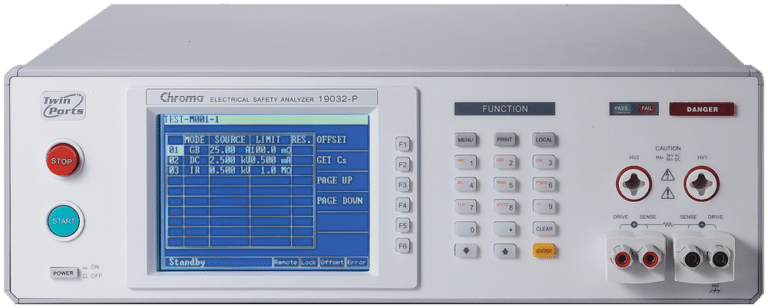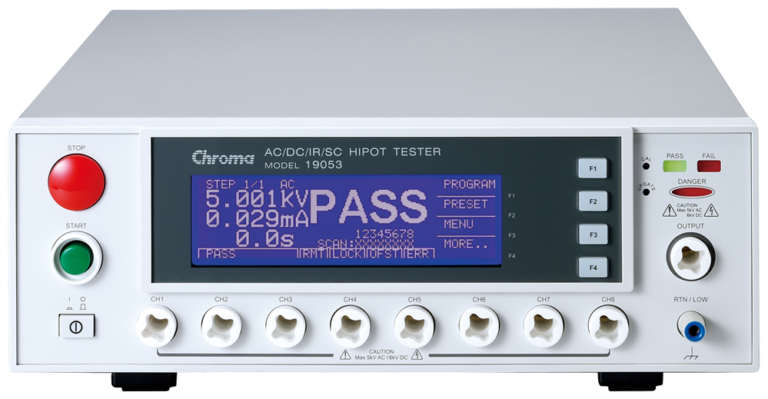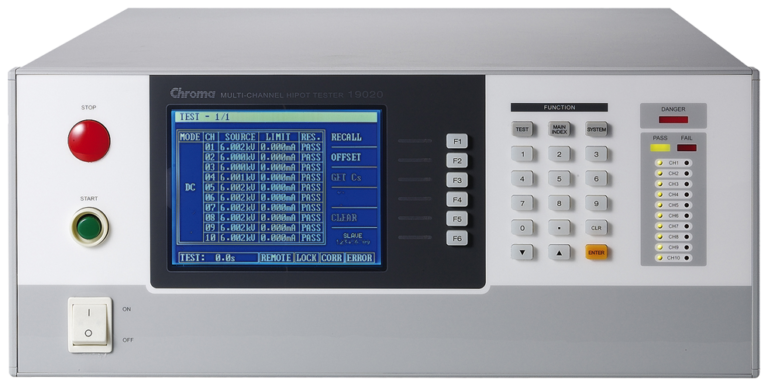Battery | Cell, Module, Pack Testing
High precision, integrated battery cycling and energy storage test solutions designed for lithium ion and other battery chemistries. From R&D to end of line, we provide advanced battery test features, including regenerative discharge systems that recycle energy sourced by the battery back to the channels in the system or to the grid.
Battery Test Solutions
Chroma satisfies battery test requirements such as charge rate, discharge rate, state of charge (SOC), and state of health (SOH), and depth of discharge (DoD) with your need for accuracy in measuring voltage, current, temperature and power – statically and dynamically.
Battery Cycling: Cell, Module, Pack
Battery cell, module and pack level charge/discharge cycle testing solutions designed to provide high accuracy measurement with advanced features. Most of our solutions are regenerative – so energy sourced by the battery back is recycled back to the channels in the system or to the grid.
Battery Simulation
Battery simulation software for testing battery-connected devices in all applications to confirm if the device under test in performing as intended. Battery state is simulated if the battery is unavailable for testing, which eliminates waiting for the charge/discharge of an actual battery. Real-time test results include voltage, current, power, SOC%, charge/discharge state, and capacity.
Fuel Cell Testing
Fuel cells produce power by combining hydrogen fuel and oxygen electro-chemically and are extremely efficient and environmentally friendly. Chroma’s battery test platforms are engineered and well-equipped to support fuel cell research and design validation for efficiency, power, and characteristics.
Ultra/Super Capacitor
Chroma offers ultra and super capacitor charge/discharge testing systems with high precision output and measurement up to 0.02%. Satisfy IEC 62391 EDLC test requirements with a high sampling rate of 10ms. The modularized multi-channel architecture offers both flexibility and expand-ability, catering to cycle test requirements.
Battery Test Systems
Battery Reliability Test System
Chroma 17010
Up to ±0.015% of full scale
Up to 100µS
Up to 10mS
Chroma’s Battery & Reliability Test System is a high-precision system designed specifically for testing lithium-ion battery (LIB) cells, electric double-layer capacitors (EDLCs), and lithium-ion capacitors (LICs).
Battery Pack ATS
Chroma 8720
5kW ~ 350kW
0V~900V
0A~1000A
Test the battery packs in end of line (EOL) production for a comprehensive Pass/Fail check, including mechanism assembly, pressure insulation, BMS communication, internal high voltage relay parts, battery balance, and temperature distribution, etc.
Battery Cell Formation Turnkey Solution
Chroma 17000
100kW*14, 200kW, 200kW*14, 300kW*14
5~850V, 100~1700V
0.1%F.S.
With built-in parallel channels and dynamic profile simulation functions; parallel capability maximizes the charge and discharge current and power, increasing the efficiency and flexibility of equipment utilization
Featured Articles
Available for Download
Battery Safety Testing
Our electrical safety testers support AC/DC hipot, leakage current (LC), insulation resistance (IR), and partial discharge (PD) at very high speed and accuracy to ensure the quality and safety of cells and modules before they go to the next level of production.
Electrical Safety Testers
A Better Insulation Test: Decreasing Risk of Electrical Shorts in Lithium Ion Battery Cells
Testing with basic hipot or insulation resistance test instrumentation does not provide any indication to whether the space between the electrodes is safe enough to undergo the charge/discharge cycles of the battery. Partial Discharge (PD) detection in addition to insulation resistance testing, like what’s found in the Chroma 11210, could detect those defects in the dry cell stage prior to electrolyte filling. Detecting burrs or particles early in the production phase allow for these cells to be filtered out before shipment. This can greatly increase product quality, reduce failures, and mitigate any danger that may come from an internal electrical short.
Software and SoftPanels
Battery Pro
Battery Pro is an intuitive, multi-channel test software platform designed for cell to pack level charge-discharge testing with real-time monitoring.
Power Pro
Designed for power conversion applications, PowerPro provides an editable library of over 35 pre-written commonly used tests.
Battery Simulator
Our Battery Simulation software is used to validate device functions during development in lieu of an actual battery or batteries.
Battery LEx
Create up to 500 projects and construct corresponding test plans according to different DUT types or requirements.
Decreasing Risk of Electrical Shorts in Lithium-Ion Battery Cells
This paper is a must read for cell manufacturers who are concerned about the quality of their battery cells and reducing the risk of battery fire before the cell reaches the end user.
